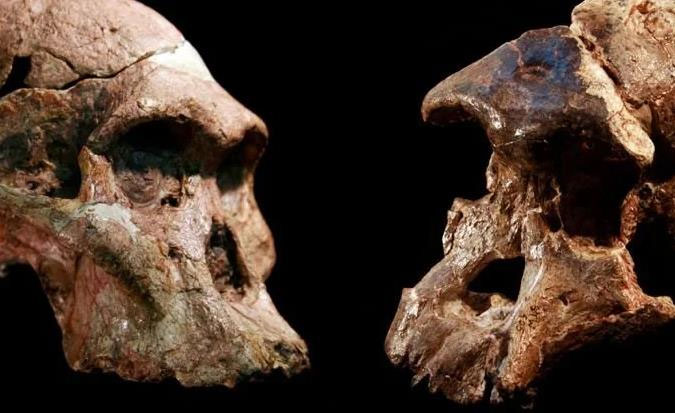Analyzing cosmic matter, finding Earth's first human?
Two special isotopes in quartz created by high-energy cosmic ray reactions near the Earth's surface have revealed the dating of remains that may be older than the famous Southern ape Lucy.
A research team involving geologist and geophysicist Darryl Granger from Purdue University in the US and archaeologist Dominic Stratford from the University of the Witwatersrand in South Africa analyzed the rare isotope in quartz, aluminum-26. and beryllium-10.
"These radioactive isotopes, known as 'cosmic nuclides', are produced by a high-energy cosmic-ray reaction near the Earth's surface and their radioactive decay reveals the date" - Dr. Granger explained.

2 skulls found from Sterkfontein
According to Science Alert, these two rare isotopes of quartz-bearing rocks also contain the remains of several Southern ape-men (Australopithecus), encapsulating near-simultaneous events: cosmic rays that transform In exchange for stones, human remains were buried, and then the whole rock fell into the entrance of the cave.
The mysterious rock belongs to the Sterkfontein limestone cave system in South Africa, which is known as the "cradle of humanity" when possessing many very ancient southern ape-man remains.
Previously, however, the record for the oldest human specimen was held by Lucy, a 47-piece fossil containing 40% of the body of a 3.2-million-year-old Southern ape, unearthed in Ethiopia.
New analysis of aluminium-26 and beryllium-10 has caused shock to reveal that the remains in Member 4 cave of the Sterkfontein limestone cave system contain sets up to 3.4-3.7 million years old, including the box. the famous Mrs. Ples skull. In Member 2 cave, there is also a 3.67 million-year-old remains called Little Foot.
Thus, the Sterkfontein remains are older than Lucy, showing that this is indeed a "cradle of humanity" that needs further research. Not to mention, the area is full of remains, which may reflect the diversity of southern hominin lineages as well as later newer species.
The study has just been published in PNAS.
- The race to find dark matter is heating up
- Astronomy with new fields: Dark matter
- Revealing the first image of dark matter
- New method of calculating cosmic mass
- Earth is losing dark matter
- Chinese satellites discover mysterious signals in the universe
- The mysteries of the universe make science
- Hypothesis of 'mirror world'
- New theory of matter particles creates the universe
- Re-establishing the universe on a computer
- Research shows that we all misunderstood the universe
- Black matter is not the cause of the collision in the universe?
 Discovered an ancient centipede fossil 99 million years old
Discovered an ancient centipede fossil 99 million years old Discovered bat-like dinosaurs in China
Discovered bat-like dinosaurs in China Discovered a 200-year-old bronze cannon of the coast
Discovered a 200-year-old bronze cannon of the coast Discover 305 million-year-old spider fossils
Discover 305 million-year-old spider fossils